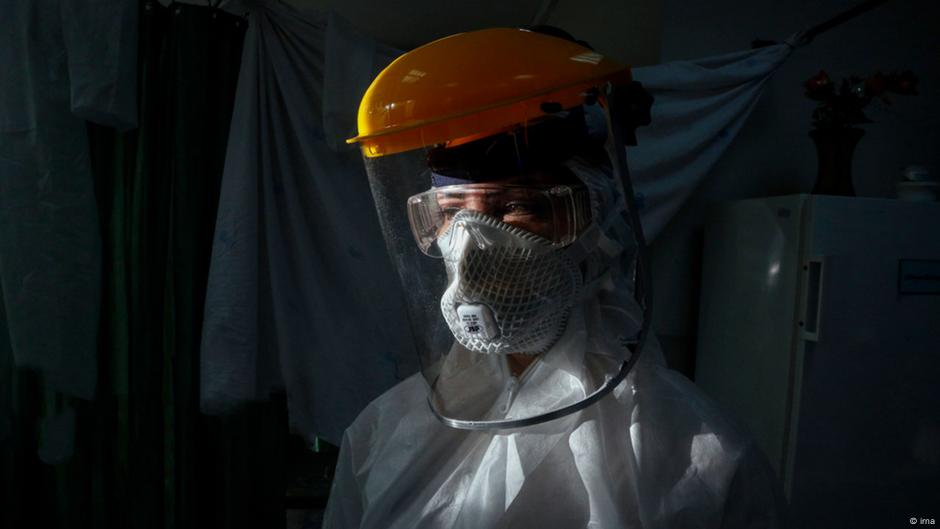
COVID FLIRT VARIANTS KP.3 AND XEC: WHAT YOU NEED TO KNOW
Over the European summer, the number of COVID-19 infections rose again, with test positivity for SARS-CoV-2 above 20%. Globally, test positivity was about 10%.
The US also saw a rise in hospitalizations, apparently after a wave of COVID infections in Singapore.
Now, as we in the northern hemisphere move into autumn and winter, there is concern about two new variants.
The first one is known as KP.3 and its sub-variant KP.3.1.1. The second is XEC, a "recombinant" variant which is related to KP.3.
KP.3 is considered a global Variant of Concern (VOC) in the US by The US Center for Disease Control and Prevention (CDC) because KP.3 was "predominant" there in August. VOCs may spread more easily or cause more severe illness.
It's important to note that KP.3 is not a global VOC, only in the US.
The CDC recommended people get an updated 2024–2025 COVID-19 vaccine.
What are the KP.3 and XEC variants?
KP.3 is one of a group of SARS-CoV-2 variants known as FLiRT variants. SARS-CoV-2 is the base virus that causes COVID, the illness.
As the name KP.3 suggests, there are also KP.1 and KP.2 sub-variants. KP.3 became predominant because it is more infectious than other circulating sub-variants.
KP.3 and other FLiRT variants descend from the omicron variant of SARS-CoV-2.
Now, think of a family tree: The KP variants are children of the JN.1 variant. And JN.1 is, in turn, a child of omicron variant BA.2.86.
This is important to know because of all the major COVID variants, omicron remains dominant, globally. You'll recall, other major variants are alpha, beta, delta, and gamma.
But omicron keeps evolving or mutating into new variants and sub-variants.
XEC the sub-variant is believed to have formed when KP.3 joined with KS.1.1. But we don't know for sure.
As Francois Balloux, Professor of Computational Systems Biology and Director at the UCL Genetics Institute, UK, told the Science Media Centre, "XEC is a likely recombinant between the subvariants KP.3.3 and KS.1.1." [Ed.: our emphasis]
XEC COVID variant in Germany
XEC has been reported as bring first detected in Germany in June. But it is yet to appear on the Robert Koch Institute's COVID Dashboard.
As a spokesperson from the Robert Koch Institute implied via email, XEC may never appear on the dashboard because it is "impossible to predict how individual variants will spread."
Since June, the number of XEC cases in Germany has been in double-digits, but the spokesperson did not specify further. The RKI's doesn't even mention XEC on its weekly assessment, published September 18, 2024.
The focus in Germany remains on KP.3.1.1, which is dominant and considered more infectious than previous variants.
In an interview with the DPA news agency, virologist Sandra Ciesek said it was no surprise that KP.3.1.1 was more infectious.
"The virus keeps mutating in search of new ways to infect people […] but that doesn't mean that the variant causes a more severe illness," said Ciesek, who's based at the German Center for Infection Research.
How prevalent are KP.3.1.1, KS.1.1 and XEC?
Up to September 3, KP.3.1.1 remains the most dominent variant, according to data provided by GISAID, the Global Initiative on Sharing All Influenza Data, and presented by outbreak.info.
KP.3.1.1 was detected worldwide 14,396 times KP.3.3 was detected worldwide 9,157 times KS.1.1 was detected worldwide 2,650 times XEC was detected worldwide 95 timesHow dangerous are the FLiRT variants?
Paul Hunter, professor of medicine at the University of East Anglia, UK, told DW in August, "FLiRT" was a "silly" acronym "but it's stuck," he said, and it's one with a serious meaning.
FLiRT denominates mutations at key sites in that all-important spike protein — the one that allows the virus to spike and attach to a living cell, infect it, and then replicate itself and spread.
FLiRT variants appear to have a potential to be more dangerous than previous versions of SARS-CoV-2.
A paper published in July 2024 suggested that KP.2 had "a greater ability to evade vaccine-induced immunity," and that it reproduced more effectively than its "parent" variant JN.1.
As for KP.3, the CDC said its sub-variant KP.3.1.1 was probably responsible for 30-40% of COVID-19 clinical specimens in mid-August 2024 in the US. That suggested a rapid increase from a rate of 20-26% two weeks earlier, at the start of the same month.
The risks associated with KP.3.1.1 are particularly acute for people older than 65 years of age and children younger than 2 years, said the CDC.
Edited by: Fred Schwaller
Select sources:
Tools to explore COVID-19 and SARS-CoV-2 data with variant surveillance reports, data on cases and deaths, and a standardized, searchable research library https://outbreak.info/
COVID-19 Variant Update via the US Centers for Disease Control and Prevention and the Infectious Diseases Society of America https://www.idsociety.org/covid-19-real-time-learning-network/diagnostics/covid-19-variant-update/
Author: Zulfikar Abbany
2024-09-19T13:04:51Z dg43tfdfdgfd